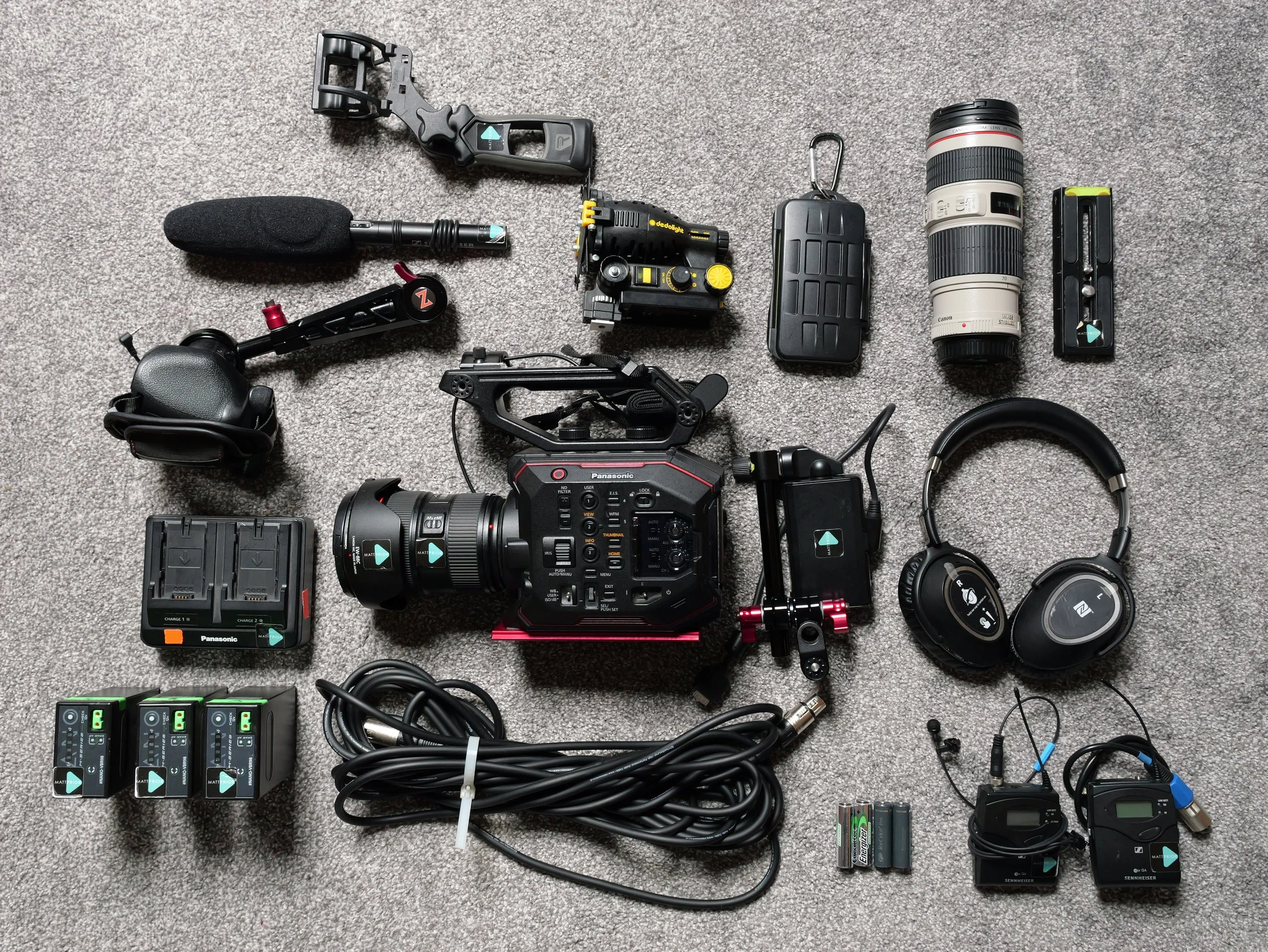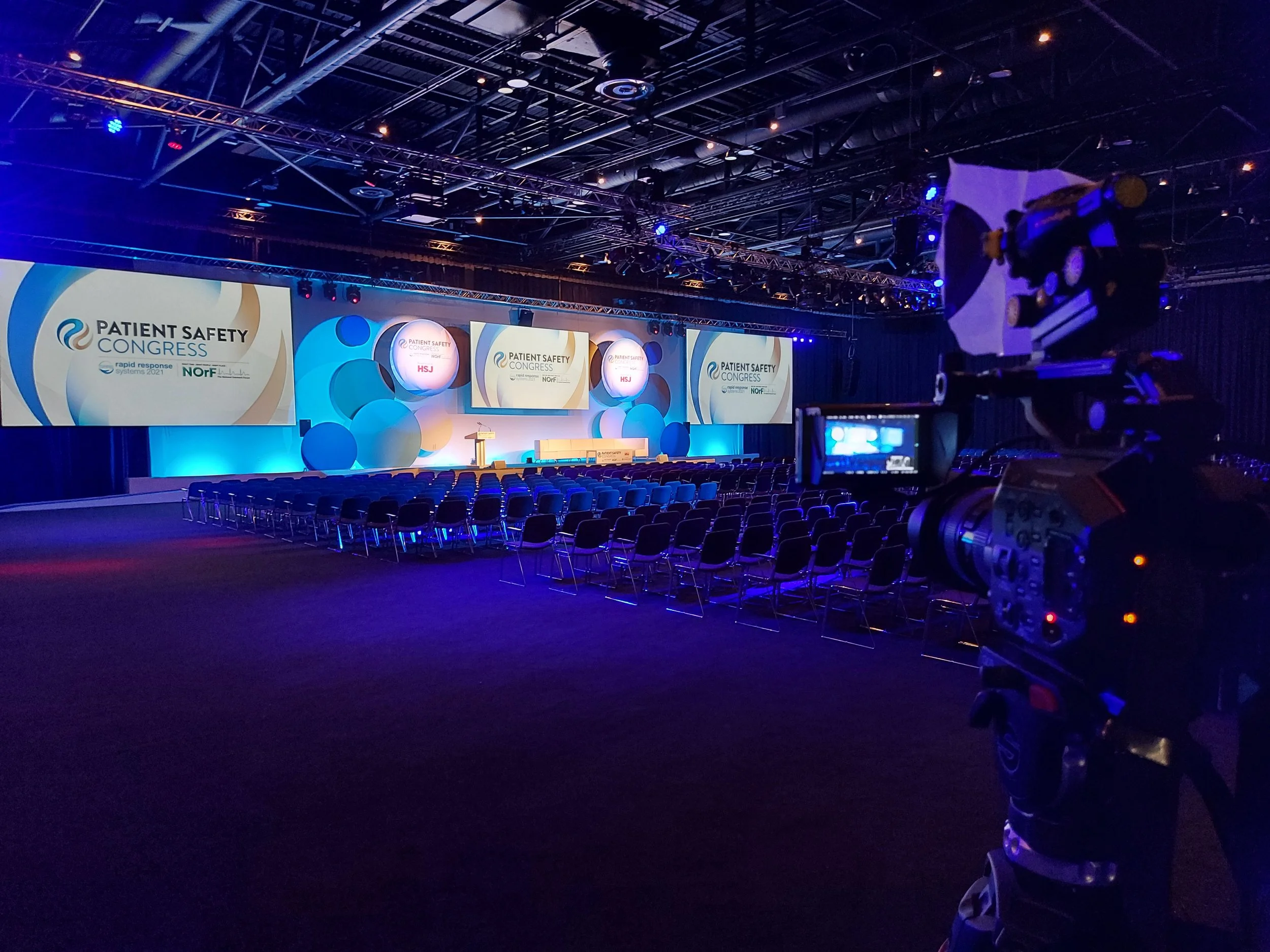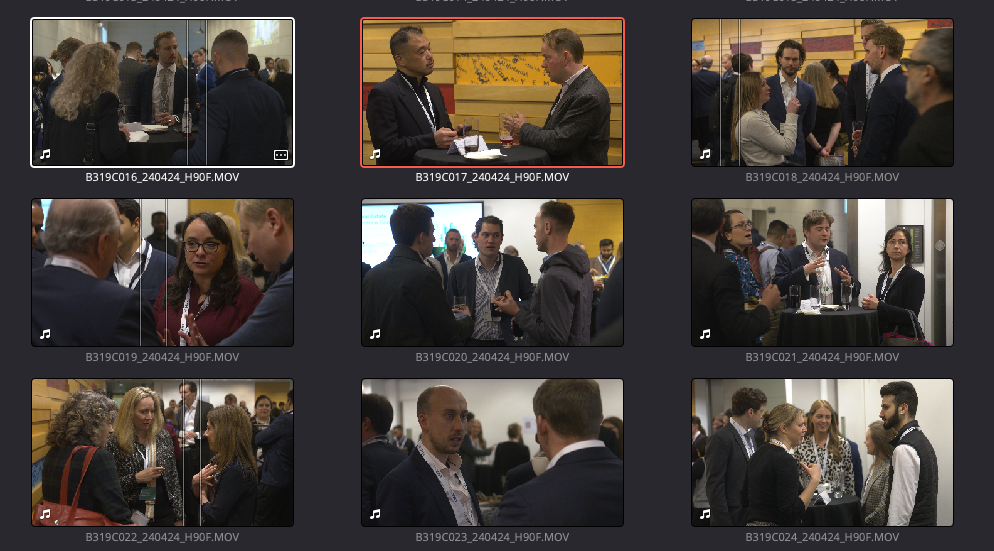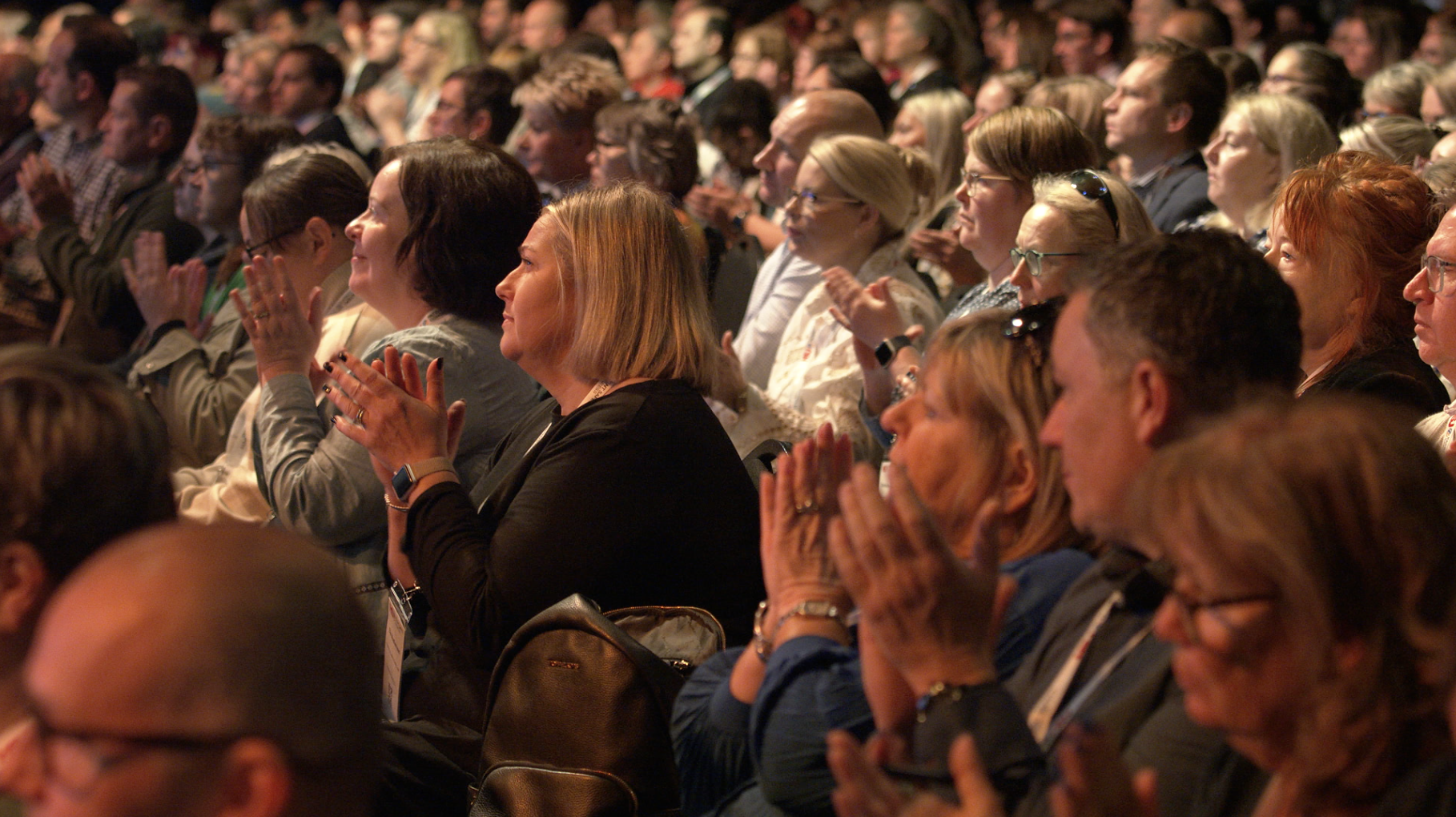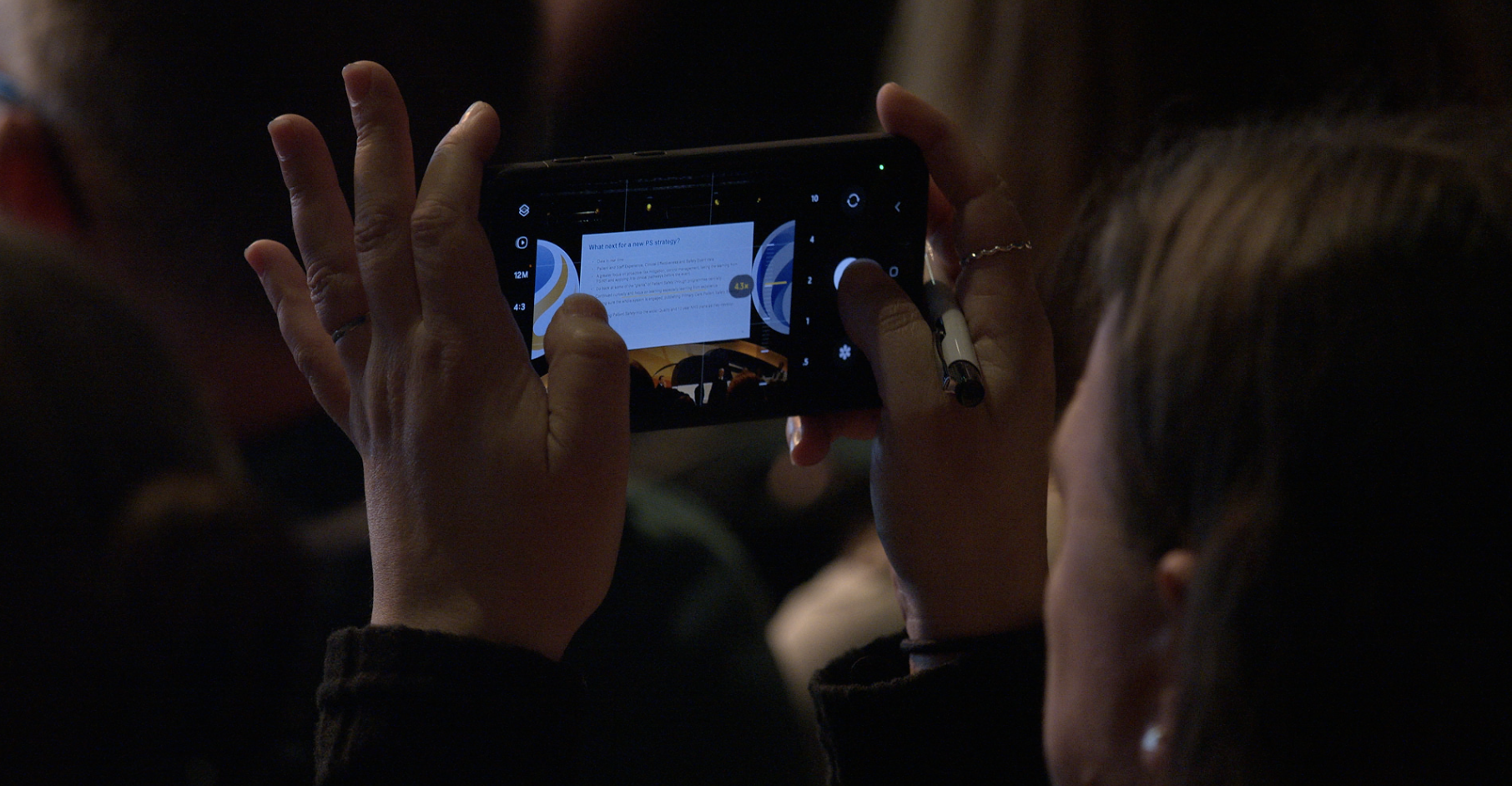A Day in the Life: Filming a 1-Day Conference Highlights Video for LinkedIn
Smaller conferences and events may only need 1 camera, but this depends on the client's deliverables. If shooting for multiple edits or at a larger event, 2 or more camera ops are usually needed.
Video production is an exhilarating industry to work in, there’s no doubt about it. Although social media is quick to highlight the more glamorous aspects of it (working with cool kit, going to stunning locations, meeting famous people etc.) it’s also a serious business. As with any role in any industry, there are highs, lows and at times, moments of unexpected mundanity!
So, if you’ve ever wondered what life’s really like for those working in this industry day-to-day then in this series of posts, I’ll be sharing what goes on behind the scenes from my perspective as a cameraman (sometimes referred to as a videographer or DOP, depending on the project). I’ll show my thought process, the type of challenges that arise and how they’re overcome, with the end goal of meeting our client’s brief and delivering the highest quality product possible.
Project: 1-day conference, self-shooting
Brief: Capture highlights video for LinkedIn < 3 minutes edit
Call time: 8am onsite, delegates arrive from 8.30
Prep for a 1-day conference generally starts the day before the event (although sometimes earlier if it’s a busy week of shooting or additional kit hire is needed). The 2 main considerations are the kit list and travel plans.
Kit list
Good thing I played a lot of Tetris as a kid, trying to fit all this into one case!
Because of the early start it’s crucial to ensure all the kit has been checked and packed ahead of time. Nobody wants to pack at 5am! I live and die by the checklist, making sure everything from the camera through to tiny accessories such as tripod plate screws have been packed.
For this job I’ll need the camera, a general zoom lens and telephoto lens for the b-roll, a tripod, microphone, and portable light for interviews. Cards are formatted and settings adjusted so it’s one less thing to worry about in the morning. As this is a relatively quick turnaround edit, I’ll be shooting in HD, rather than 4K using an edit-friendly codec, such as ALL-I 100mbps at 25fps and capturing to 2 cards for safety.
Where possible, backups of certain equipment are included, although this can be dependent on the item and what my travel plans are. Kit is condensed as best as possible and makes for quite a heavy bag!
Travel plans
Thanks, phone, for reminding me of how depressingly little sleep I get!
As this job is in central London and kit requirements are minimal, my preference is to take the train. It’s greener, takes the headache out of parking and if I’m lucky, I might get to have a snooze on the way in! However, as anyone who lives in the South East knows, Southern Rail can be notoriously unreliable, so I’ll be making sure to get an earlier train than needed, allowing for delays. As it’s early in the morning the potential for trouble is less, so I’ll allow for 30-40 minutes’ worth of delays. For later in the day, I would allow for an hour or more, just to be safe.
Arrival at venue
Scouting for suitable interview locations before delegates arrive
No travel issues and I arrive at the venue 30 minutes early. Perfect! Time to grab a coffee, prep the kit and liaise with the client. We’ll need to double check the timings for the day, note any changes to the brief and scout the location. I’ll be looking for suitable areas to record interviews, check the lighting and colour temperatures throughout the venue and decide on the best angles to capture b-roll of the main sessions.
Client has scheduled interviews for the end of the day, which is ideal because A) we can capture them all in one go in one place and B) people can speak directly about the content they’ve just witnessed. This leaves me to capture b-roll for most of the day and I won’t risk missing anything.
Event starts
You can never have enough networking footage for this type of edit
Delegates start arriving and it’s time to start rolling. Without putting a camera directly in their face first thing in the morning(!), I need a couple of shots of people signing in and then it’s networking. Networking footage with lots of smiles and engagement is so useful in the edit, because it can be used almost anywhere within the sequence and always looks good. Although sometimes I’m battling with the light in some venues, I try to record most of this footage in 50fps to play back in half speed, because everything looks better in slow motion!
Speaker sessions in the main room start. The aim is to get 3-4 angles of each speaker for variety but without shooting too much otherwise I’ll be cursing myself later in the edit. A wide of the full session (showing how busy it is), mid shots and close ups and using the 30-degree rule where possible to make sure they cut together.
Personally, I prefer to adopt a gentle handheld style for this sort of video because I can move and react quicker, but also it helps to give a ‘live’ feel to it, especially if you do a gentle reveal of someone by shifting the weight from one leg to the other. Sometimes I’ll bring in the tripod, but it’s not always practical in the smaller venues.
Each speaker would ideally have 3 good angles for suitable options to make for a more dynamic edit
Change of plan!
Ideally we’d have a separate room for interviews, although depending on the venue this isn’t always possible. However, an interesting or on-brand background is essential!
As is typical of events, things often change! One of the main speakers who was scheduled to be interviewed now must leave early as they’re off to speak at another event! I quickly run to the staff room to grab the tripod and mic and we set up outside the main room where it’s quiet and there’s a nice backdrop, preferably with some event or client branding.
Suddenly I realise that the venue has loud music playing, which is a problem both for copyright issues, but also for the fact that I’ll be adding royalty-free music myself to the edit, so having 2 tracks at once will clash horribly. Event staff kindly turn it off for now.
The frame is set, the light is on and now for a quick sound check before we roll. The subject is getting itchy feet because they have a taxi coming in 5 minutes, so we must be quick! The client stands to one side of camera and asks the questions, making sure that they give some context to the answer. We’re looking for relatively short soundbites so I can fit everybody’s contributions in. As they’re a speaker, what we really need is a soundbite about what they were talking about and what they wanted the audience to take away from their session. Anything else is a bonus here. Luckily, they’re very experienced in doing interviews, and we get the answers we need without a hitch.
Before they leave, I also capture their name and job title because I’ll have certainly forgotten them come the edit.
Engagement is key!
B-roll, interviews, repeat.
Back in the main room and hopefully I haven’t missed any speakers, but I try to get footage of everyone on the panel, even if they’re just listening. Because you don’t always know who’s going to get interviewed, and my style is to show b-roll of someone before their interview appears on screen (where possible) it’s safest to get a bit of everyone. In addition, footage of the audience looking engaged, asking questions, taking photos, and applauding always looks good for the edit.
The rest of the day continues in a similar fashion, making sure I have good coverage of each session and I’m on standby should any last-minute interviews be needed. At larger events or where multiple edits are required, having a second shooter certainly helps relieve some of the pressure, otherwise editing will be tricky. Hopefully I’ll get a spot of lunch too (event food is always so good!)
End of the day
An ideal number of contributors for a sub-3 minute edit
I’ve probably shot more than I need to, well over a 10:1 shooting ratio, but I’m safe in the knowledge that every session has been well covered. However, there are a few more interviews left to capture. Trying to drag people away from the drink’s reception networking is often a challenge! Noise levels are also a consideration here, but it’s amazing how much this can now be treated in editing!
When it comes to the total number of interviews needed, the general rule of thumb for me is between 5 and 8 people for this type of edit. A good balance would be 1 organiser speaking about the event, 3-4 speakers talking about their content and takeaways and the rest featuring delegates giving their reactions to the event. There’s a bit of give and take here, but I find this combination usually works nicely.
6pm(ish): wrap and pack down!
Hopefully there are no travel issues on the way home. Emails and that persistent green owl are addressed en route and I’m back home between 8 and 9pm.
Before the edit starts, the footage will be backed up onto a couple of hard drives and logged in a project document for quick future reference. Whether this happens tonight or tomorrow depends on whether I’m filming the next day, but for now, I think it’s time for a tipple. Cheers!
For a brief insight into what happens next once the footage is in the can, you can view my post on the video editing process at a glance here.
And event highlight video examples can be viewed here.
Thanks for reading.
Other posts that may interest you:
A lot can happen in 10 years. I share some of the ups and downs I’ve experienced in freelance life here.
If you’re looking to hire a videographer, make sure they have these key traits!


